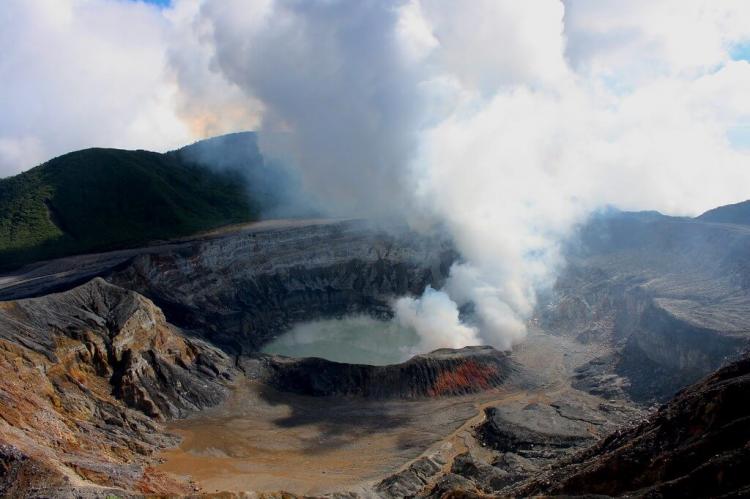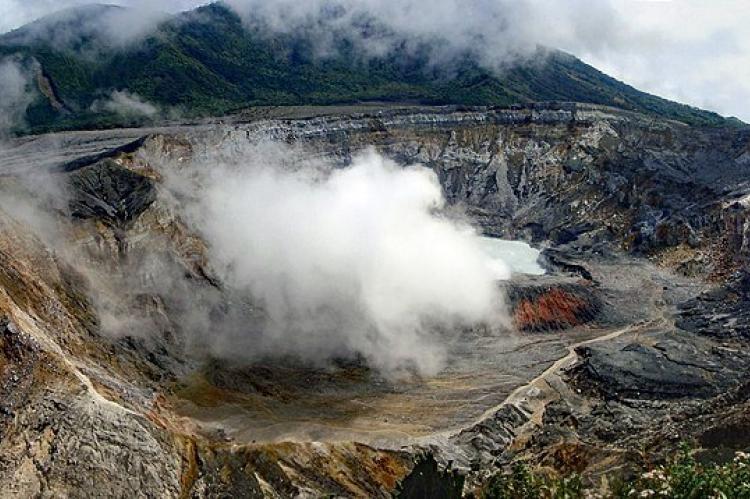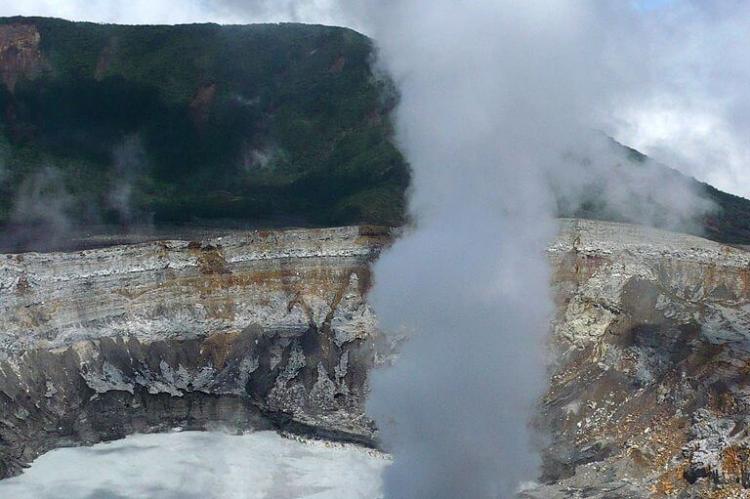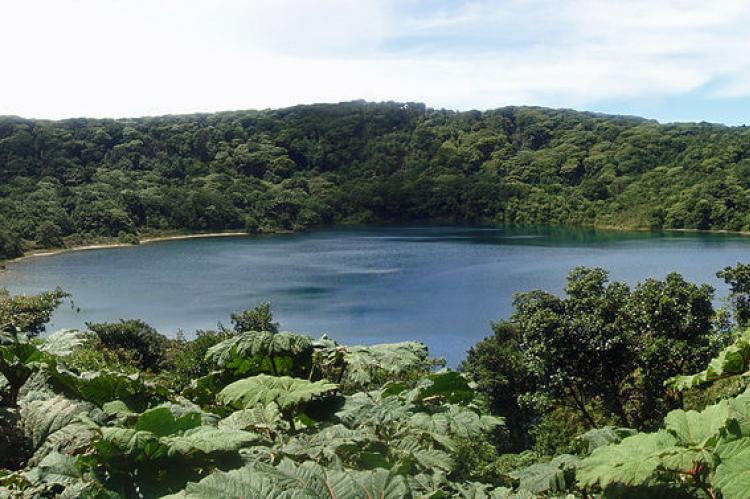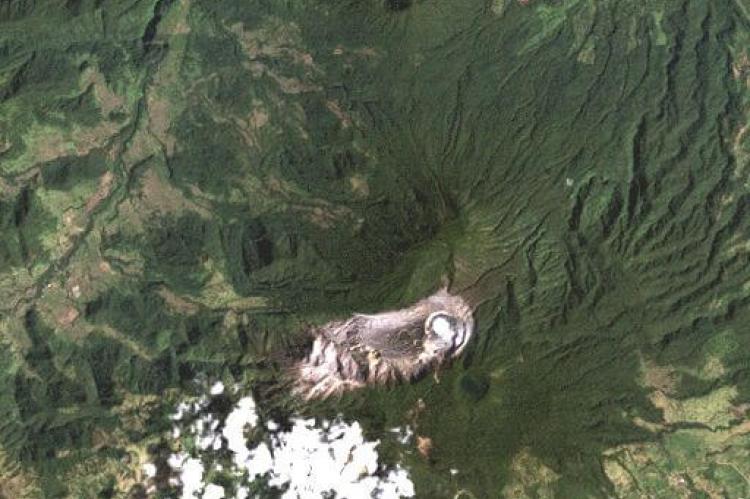Poás Volcano National Park: A Landscape Shaped by Fire and Ice
Rising dramatically from Costa Rica's central highlands, Poás Volcano is one of the country's most active and captivating volcanoes. Located within Poás Volcano National Park in Alajuela Province, this stratovolcano has a long history of eruptions, with over 40 recorded since 1828.
Poás Volcano: Costa Rica’s Fiery Mountain of the Central Highlands
Rising dramatically from Costa Rica's central highlands, Poás Volcano is one of the country's most active and captivating volcanoes. Located within Poás Volcano National Park in Alajuela Province, this stratovolcano stands at 2,697 meters (8,848 feet) above sea level and has a long history of eruptions, with over 40 recorded since 1828. Its volatile nature, exemplified by significant eruptions in 2017 and 2019, fascinates scientists and tourists. Poás Volcano's enormous crater, acidic lake, and surrounding cloud forests make it an essential site for geological and ecological study. This exploration delves into its geological characteristics, eruptive history, and the biodiversity of its national park.
The Geology of Poás Volcano
Eruptive History and Activity
Poás Volcano is renowned for its frequent eruptions, with over 40 documented since 1828. Most recently, in April 2017, the volcano produced one of its largest phreatic eruptions in years. These phreatic explosions occur when magma heats underground water, causing steam-driven eruptions. The 2017 eruption led to the evacuation of residents and the closure of Poás Volcano National Park for 17 months. A 2.5 km (1.5 mi) safety perimeter was established around the crater, and subsequent eruptions in 2019 reaffirmed the volcano's volatile nature.
Crater and Laguna Caliente
The Poás Volcano features one of the world's largest volcanic craters, 1.5 kilometers (0.9 miles) in diameter and nearly 300 meters (985 feet) deep. Frequent geyser eruptions and lava flows have shaped this dramatic landscape. At its center lies Laguna Caliente, a highly acidic lake that is one of the most extreme environments on Earth. The lake, with a pH close to zero and temperatures reaching 85°C (185°F), contrasts the surrounding cloud forest and offers a vivid glimpse into the forces shaping the volcano.
Laguna Botos and Other Craters
In addition to the main crater, Poás Volcano has several inactive craters, including Laguna Botos. This cold, clear lake occupies an extinct crater that last erupted 7,500 years ago. Surrounded by dense cloud forests, Laguna Botos is a peaceful contrast to the active, sulfuric environment of Laguna Caliente. A third crater, the Von Frantzius crater, is also part of the volcanic landscape, though it is less prominent than the other two.
Poás Volcano National Park
Ecological and Conservation Significance
Poás Volcano National Park was established in 1971 and covers over 16,000 acres (65,000 hectares) of the Central Conservation Area. It is a key part of the Cordillera Volcánica Central Biosphere Reserve, a UNESCO-designated conservation region encompassing several volcanoes. The park is known for its diverse ecosystems, ranging from cloud forests to montane rainforests. These ecosystems support rich biodiversity and are critical for conservation efforts.
Visitor Access and Safety
As one of Costa Rica's most popular tourist attractions, Poás Volcano National Park draws thousands of visitors each year. However, volcanic activity often necessitates park closures for safety reasons. Following the 2017 eruption, the park was closed to the public for 17 months due to dangerous levels of sulfuric gases and ash. Today, visitor safety remains a top priority, with protective measures in place, including restricted access to certain areas and gas mask requirements during heightened volcanic activity.
Scenic Trails and Craters
Poás Volcano National Park visitors can explore a network of well-maintained trails leading to active and extinct craters. One of the park's highlights is the trail to Laguna Botos, where hikers can experience the cool, misty cloud forest and observe local wildlife. The contrast between the barren, sulfuric landscape of the active crater and the lush, green surroundings of Laguna Botos provides an unparalleled experience of Costa Rica's diverse landscapes.
Flora and Fauna of Poás Volcano
Biodiversity in the Talamancan Montane Forests
Poás Volcano National Park is part of the Talamancan montane forests ecoregion, which boasts a wide variety of flora and fauna. Among the park's notable plant species is the Poás magnolia, an endemic tree that thrives in the volcanic soils. The park is also home to a rich array of bird species, including the resplendent quetzal, hummingbirds, and toucans. The cloud forests near Laguna Botos are particularly rich in avian diversity, providing critical habitat for these species.
Mammals and Other Wildlife
In addition to its birdlife, Poás Volcano National Park hosts a variety of mammals, such as coyotes, rabbits, and marmots. These animals have adapted to the park's cooler temperatures and high altitudes. Although they are less frequently observed than birds, their presence contributes to the park's overall biodiversity.
Conservation Challenges and Efforts
Managing Volcanic Hazards
The frequent eruptions of Poás Volcano present significant challenges for conservation and public safety. Monitoring the volcano's activity is essential for protecting visitors and minimizing environmental damage. Sulfuric emissions and acid rain caused by volcanic activity pose threats to local wildlife and plant life, necessitating regular environmental assessments to mitigate these effects.
Balancing Tourism and Conservation
Poás Volcano National Park is one of Costa Rica's most visited natural attractions, and managing the balance between tourism and conservation is an ongoing challenge. Tourism generates essential revenue for the park's conservation efforts but also puts pressure on the environment. Sustainable tourism practices are promoted to minimize visitors' impacts and ensure that the park's ecosystems remain protected.
Conclusion
Poás Volcano is one of Costa Rica's most dynamic natural landmarks, embodying the power and beauty of volcanic activity. From its massive crater and acidic Laguna Caliente to its serene cloud forests and rich biodiversity, the volcano offers a striking contrast of natural wonders. The surrounding Poás Volcano National Park provides essential conservation efforts to protect these fragile ecosystems while welcoming visitors to one of the country's most iconic sites. Careful management of the park and its resources ensures that this geological marvel will continue to be a place of scientific interest and natural beauty for future generations.
